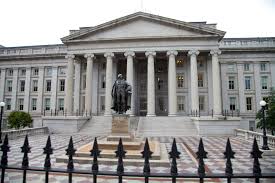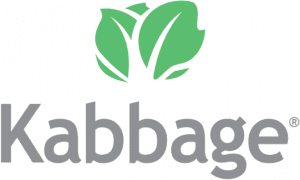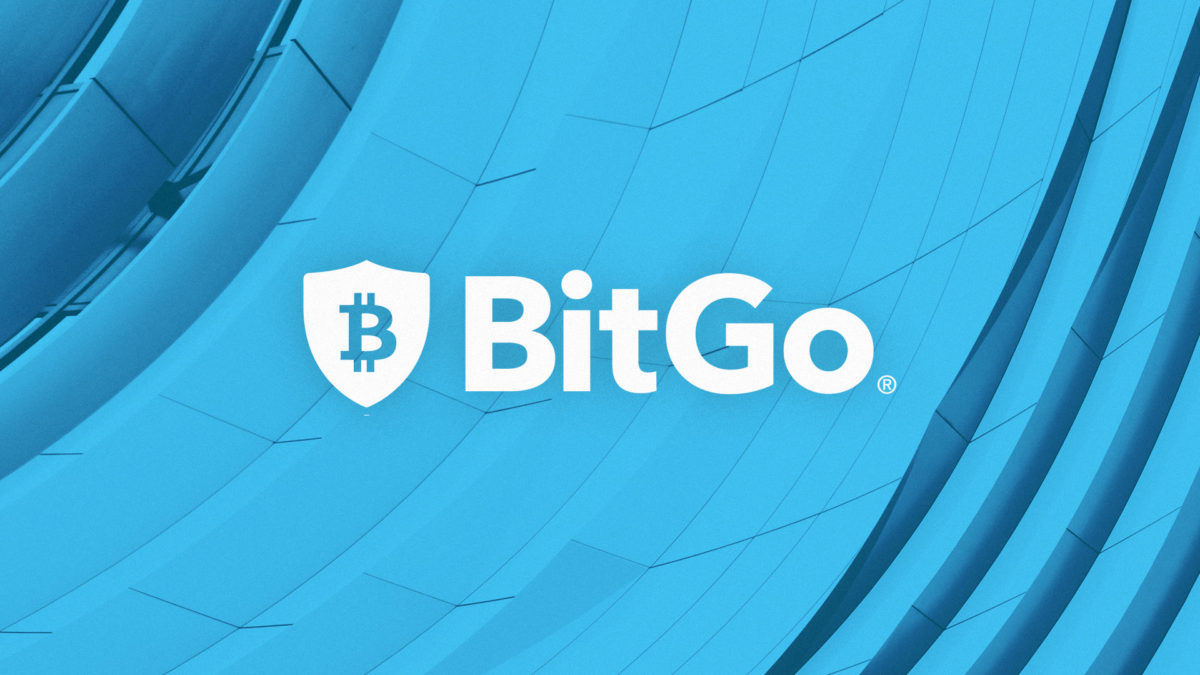Monthly Newsletter | Jul 2020 | Issue 107
Featuring
- Robotic Process Automation: Guiding through tuough times.
- Building Resiliency and adapting to challenges: Tips to Lenders
- In the News
- Major Events
- Key Stats
Focus On
Robotic Process Automation : Guiding the Way Through Tough Times.
In the face of crisis, such as the unprecedented COVID-19 pandemic, businesses are turning to Robotic Process Automation (RPA) as a guiding force to navigate through turbulent times. While managing in normal circumstances may be routine and predictable, crises bring unexpected challenges and outcomes. The pandemic has caused severe financial disruptions, leading to an overwhelming number of individuals seeking financial assistance from lenders. However, traditional manual processing and lengthy approval chains are proving inadequate to handle the surge in customer demand.
The incorporation of Robotic Process Automation offers a transformative solution, streamlining workflows and automating processes to effectively meet customer needs in a timely manner. By embracing RPA, businesses can enhance their resiliency, adapt to challenges, and ensure the efficient delivery of financial assistance to those in need.
Robotic Process Automation to transform key lending functions:
Today’s empowered customers have no patience for the mounds of paperwork and lengthy processes that was the hallmark of traditional lending. Used effectively, Robotic Process Automation platforms can streamline workflows and automate many of the steps humans have traditionally completed.
Using Robotic Process Automation tools, the entire origination process is streamlined. The initial customer request is captured via a digital form on the bank’s website. It is then sent through an automated workflow to each of the parties that must grant approval. The entire process can be completed in just minutes, compared with the hours or even days required in the past.
Introducing Robotic Process Automation can also help a lending firm fully document and improve its internal processes. Rather than relying on inefficient paper trails, automated workflows can be created that match exact requirements and ensure prompt responses for customers.
Easy customer management – Customer management is made easy through automation. RPA can mitigate the inconsistency and delays of manually collecting financial data and other mandatory customer information
Daily operations – The banking industry deals with heavy volume of data. Manual processing of this data is a time-consuming and error-prone process. RPA facilitates seamless communication and transfer of information from legacy to newer software. It automates menial and repetitive tasks, thereby reducing the turnaround time in processing a request.
Enable Compliance– RPA mitigates the risk of data compromise that goes together with manual manipulation of customer information. With automation, the risk of non-compliance, data loss, or data compromise is greatly reduced.
Loan processing – Underwriting is the most crucial step in lending. It means predicting if a potential borrower would be able to pay back. However, manual process of collecting information is tedious, complex and error prone. RPA powered software enables compilation of a prospect’s record from multiple systems, websites, channels and service providers. Once the data is collected, it is entered into a company’s systems for underwriters to analyze it.
Harness the Power of Robotic Process Automation: Meeting Customer Expectations and Building Resilience in Challenging Times
In today’s dynamic landscape, customers have elevated expectations regarding their interactions with lenders. They seek prompt responses to inquiries and rapid approvals. By leveraging Robotic Process Automation (RPA), lenders can streamline their operations, integrate disparate systems, and ensure a seamless flow of reliable and consistent data throughout the loan origination process. The result? Accelerated processes that not only meet customer demands for speed but also offer robust audit and control benefits.
Amid the pressures induced by the ongoing pandemic, implementing RPA proves vital in preparing lending firms for future challenges. Embracing automation empowers these firms to navigate the current crisis while establishing a resilient foundation to overcome obstacles down the road. By proactively adopting RPA, lenders can enhance customer satisfaction, expedite loan processing, and position themselves as leaders in the ever-evolving financial landscape.
Insight Consultants has a broad range of AI-powered capabilities and services that are designed to help chief information officers automate their IT infrastructures to be more resilient to future disruptions and to help reduce costs. So, if you are you looking for ways to harness the power of automation, or would just like to know more, Contact Us
Keep Reading
Building Resiliency and Adapting to Challenges: Tips to Lenders
The COVID-19 pandemic is forcing lenders to contend with a host of issues, including quarantines, diminished cash flow, travel restrictions, supply chain disruptions and overall strains on workflow. The crisis requires companies to consider not only their short-term crisis management, but also how their business continuity plan will need to be adapted.
The unprecedented and unexpected demand for relief, and the speed with which lenders are required to or choose to implement new regulatory requirements and deliver relief, challenge many participants in their ability to implement a comprehensive protocol of controls and processes that ensure and document compliance with existing legal requirements, internal policies and processes, regulator expectations, and best practices.
At Insight, here’s our most recent insight to the lending industry. By talking to our existing customers and keeping in touch with the industry, we’ve come up with challenges the industry may be currently facing and tips and best practices for managing these challenging times.
Key challenges and tips to overcome
Non-performing loans: Due to the pandemic, the economy has come to a sudden halt. This has brought about high levels of non-performing loans (NPLs), i.e. loans that are in (or close to) default. High NPLs are problematic because they impair balance sheets, depress credit growth, and delay economic recovery. It’s a tough balancing act and one that demands careful management of the lending transaction lifecycle, from origination through to collection, recovery and handling bad debts.
Key takeaway:
Implement customer-centric measures to distressed borrowers by analyzing customer data
Create debt restructuring support to non-healthy clients
Introduce a clear communication strategy for affected customers on relief programs
Volatility in credit scores: Lenders are experiencing unanticipated twists to the application process due to fluctuating credit scores. Customers’ credit scores declining due to increased credit card usage, missed payments, etc. It’s a tough time for lenders to handle this unevenness between loan approval and closure.
Key takeaway:
Introduce decisive support to borrowers with data and insights
Introduce individual customer cashflow modeling to proactively reach out to customers with tailored, relevant solution proposals
Develop new policies to address Covid-19 specifically and communicate it with borrowers
Restructure guidelines
Running business maintaining social distancing: As the globe continues to navigate through uncertain times, the safety and well-being of every individual remain the top priority. In affected areas, you’ll have customers who can’t, or don’t want to, go somewhere in person to sign paperwork. Here lenders need to be prepared in dealing with social distancing norms without disturbing daily business.
Key take away:
Provide real-time gross settlement systems which facilitate electronic payments and online loan processing
Provide clear communication on the virtual service options you provide
Be prepared to move in-person staff to online channels to provide additional support to strained call centers.
Refinancing Demand: Refinancing can be either a good thing or a bad thing for both lenders and borrowers. However, for lenders, when catastrophes like the virus send rates south, there will be a huge demand from customers to refinance at lower rates. This means new information management but at the same time you are being customer friendly and empathetic. Many lenders have trouble keeping up with this red-hot demand.
Key take away:
Introduce skipping the full appraisal process for refinances
Introduce Cash-out refinance option
Implement hardship and forbearance options
Crisis Management: Managing in normal times is repetitive in nature where problems are minimal, and outcomes are usually as expected. Crises on the other hand are sudden and outcomes are unknown. Thinking long-term while amid a crisis is a challenging exercise. No one can be fully prepared. Just think pre and post Covid-19.
Key take away:
Mitigating the manipulation of customers and employees during times of crisis
Bringing the benefits of automation to improve operational efficiency
Refocusing compliance management and improving business profitability
Scaling cyber risk programs in the new economic reality
Operating in an uncertain world means you must be digitally native, agile and, data-driven.
Insight Consultants can help you in the adoption and use of digital native processes, set up an adaptive, agile strategy, and build flexible solutions to respond to altered circumstances.
To find your footing in this new normal, Talk to Us
Get insights to stay ahead in lending industry
Insights delivered monthly !
Bank of America only big bank participating in Main Street Lending
The Boston Federal Reserve released its initial list of banks that will be participating in the Federal Reserve’s Main Street Lending Program, and only one mega bank was on the list — Bank of America (NYSE: BAC)
Bank of America was also the only bank to be listed as a lender in all 50 states, plus Washington D.C.
Beyond Bank of America, only one other top 10 bank, Truist (NYSE: TFC), was on the list of participating banks. Truist will provide loans in 16 states, followed by KeyBank (NYSE: KEY), which was listed as a lender in 15 states.
The $600 billion Main Street Lending Program was established by the Federal Reserve to provide loans for small- and mid-sized businesses to get through the COVID-19 crisis.
The program offers five-year loans with floating rates, and principal and interest payments deferred. The loans are in the range of $250,000 to $300 million. After making the loans, the banks then sell 95% interest in the loan to the Federal Reserve to collect on it, backed by the Treasury if the businesses don’t repay. The lender retains 5% of the loan.
Federal Reserve Board Chairman Jerome Powell said this week that about 300 banks had signed up to participate. However, banks are “not getting a ton of interest from borrowers,” Powell said in a Congressional hearing this week.
SBA Treasury releases the names of PPP recipients
The U.S. Small Business Administration (SBA) and Treasury released the names of all organizations that received Paycheck Protection Program (PPP) forgivable loans of $150,000 or more.
The SBA and Treasury also published data for recipients of PPP loans less than $150,000 but did not reveal the names and addresses of those businesses.
The data released provides the following details for all of the nearly 4.9 million PPP loans: North American Industry Classification System (NAICS) codes, ZIP codes, business type, demographic data, not-for-profit information, and jobs supported. For loans of at least $150,000, the SBA also listed business names and addresses sorted by the following loan amount ranges- $150,000 to $350,000, $350,000 to $1 million, $1 million to $2 million, $2 million to $5 million, $5 million to $10 million.
The list of names is accessible via the SBA Paycheck Protection Program Loan Level Data webpage.
A five-week extension for the PPP approved by Congress and signed by President Donald Trump reopened the application window for PPP funds until Aug. 8. The application window for the PPP had closed June 30 with $131.9 billion in funding remaining, but the SBA resumed accepting applications from lenders this week.
Treasury and SBA had committed to releasing the loan-level data in an agreement reached with the bipartisan leaders of the Senate Small Business Committee. Lawmakers and critics of the program had called for greater transparency into who was receiving the loans from the $659 billion PPP program.
The PPP in brief
Congress created the PPP as part of the $2 trillion Coronavirus Aid, Relief, and Economic Security (CARES) Act, P.L. 116-136. The legislation authorized Treasury to use the SBA’s 7(a) small business lending program to fund loans of up to $10 million per borrower that qualifying businesses could spend to cover payroll, mortgage interest, rent, and utilities. PPP borrowers can qualify to have the loans forgiven if the proceeds are used to pay certain eligible costs. However, the amount of loan forgiveness will be reduced if less than 60% of the funds are spent on payroll over a loan forgiveness period of either eight weeks or 24 weeks.
The program launched in early April with $349 billion in funding that was exhausted in less than two weeks by businesses and other entities seeking funds to help cope with the economic impacts of the COVID-19 pandemic. Congress then approved another $310 billion in funding for the program, but demand for the loans fell after public backlash prompted several businesses to return their PPP loans. The dampened demand was also attributed to concerns about the rules for loan forgiveness.
New P2p Lending credit card aims to shake up the industry
London-based peer-to-peer lending platform Elfin Market is set to launch what’s thought to be the first physical credit card in the P2P market. The card will be linked to the fintech’s existing product, the Elfin Purse, and will let customers make transactions and withdrawals on the go.
Founded in August 2016 by Lakshithe Wagalath and Mansour Bouaziz who have combined industry experience and technical know-how, Elfin Market connects borrowers to lenders without expensive intermediaries.
Lakshithe Wagalath, co-founder and chief operating officer of Elfin Market, told Peer2Peer Finance News: “The Elfin Card will enable borrowers to make payments directly from their Elfin Purse and make their experience just as user-friendly as with a regular credit card, but much cheaper.
The card comes with a representative APR of 5.8 per cent, although the actual rate will depend on a customer’s credit rating.
Mike Carter, head of platform lending at 36H Group, the peer-to-peer branch of Innovate Finance, told AltFi: “P2P lenders have made strong inroads into the unsecured personal loan market over the past 10 years, and several Fintech players already provide payment cards for consumers.”
“The credit card market is an extension to this, combining credit underwriting skills and Fintech user experience with P2P funding, to deliver an innovative and competitive product in a market dominated by large players,” he added.
Back in February 2020, Elfin Market announced it had reached its £400,000 crowdfunding target in just over 24 hours and went into over funding as a result.
UK Banks prepare code of conduct on defaulting of covid-19 business loans
UK banks are preparing a code of conduct for pursuing businesses that default on taxpayer-backed coronavirus loans, amid industry estimates that up to eight out of 10 borrowers could fail to repay in full.
The Guardian understands that the industry lobby group UK Finance and the state-owned British Business Bank have kicked off talks with commercial lenders in an effort to set industry-wide debt collection standards well ahead of repayments falling due.
Loans granted under the coronavirus business interruption loan scheme (CBILS) and bounce-back loan scheme (BBLS) for small and medium-sized businesses have a 12-month repayment-free period, and on the first batch this will run out in the spring of 2021. Discussions about what happens on defaulted loans then are understood to be in the early stages.
Industry estimates suggest that anywhere between 40% to 80% of businesses could default on their bounce-back loans, the banking executive said. A portion of that will be down to fraudulent applications, which are believed to account for about 10% to 15% of total BBLS, they added.
A City taskforce warned last month that £36bn worth of government-backed loans could turn toxic by next year, as companies struggle to repay growing debts during the Covid-19 crisis.
Government data released earlier this week showed that banks had approved more than 1m loans worth £42.9bn as of 28 June, including £11bn worth of CBILS and £29.5bn of BBLS. Most BBLS borrowers are small business owners or sole traders that have never taken out a commercial loan.
There is currently no deadline to set a debt collections standard, but one high street banking source said the “the decisions need to be in place fairly quickly. A British Business Bank spokesperson said: “The British Business Bank has regular meetings with lenders, UK Finance, HM Treasury and others to discuss the operation of the government’s Covid-19 response to loan guarantee schemes. Among other topics discussed is the need to treat customers fairly should collection of debts be required in the future.”
Events
THE US FINTECH SYMPOSIUM
14-15 Sep 2020, Chicago, United States
Key Stats
Central Bank Interest Rates and Current Libor Rates
| GBP Libor (overnight) | Interest (07-09-2020) | Central Banks | Interest Rates |
| Euro Libor | -0.56043% | American Interest rate (FED) | 0.25% |
| USD Libor | 0.08288% | Australian Interest rate (RBA) | 0.25% |
| CHF Libor | -0.79280% | British Interest Rate (BoE) | 0.10% |
| JPY Libor | -0.08250% | Canadian Interest Rate (BOC) | 0.25% |
| GBP Libor | 0.05338 % | Japanese Interest Rate (BoJ) | -0.10% |
























